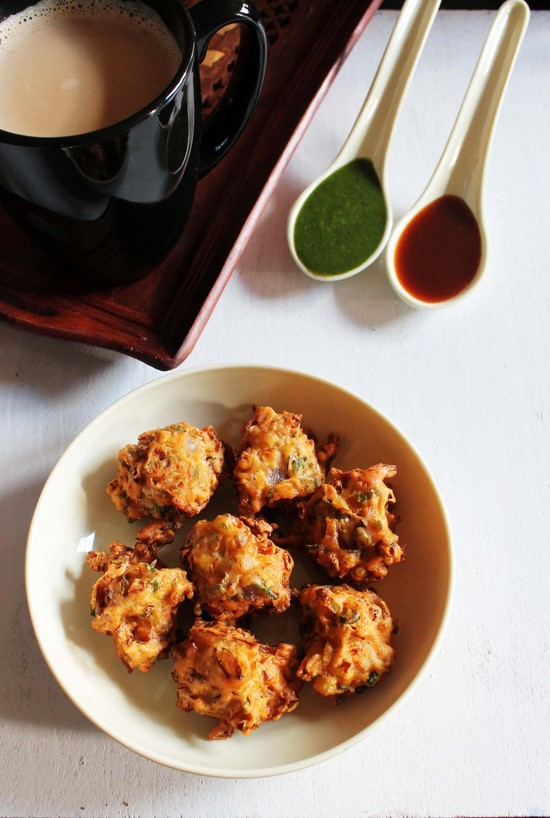Cabbage Pakoda, also known as cabbage fritters, is a mouthwatering Indian snack that delivers on both flavor and texture. Made by combining finely shredded cabbage with gram flour (besan), a few everyday spices, and herbs, these golden-brown fritters are irresistibly crisp on the outside while remaining soft and flavorful on the inside. Each bite offers a satisfying crunch, balanced with the subtle sweetness of cabbage and the warmth of spices like ajwain (carom seeds), green chili, and turmeric.
This snack is a true crowd-pleaser and can be whipped up in just about 30 minutes, making it an ideal last-minute treat. Whether you’re craving something spicy during the rainy monsoon season or looking for a comforting bite on a chilly winter evening, cabbage pakodas pair wonderfully with a steaming cup of masala chai or filter coffee.
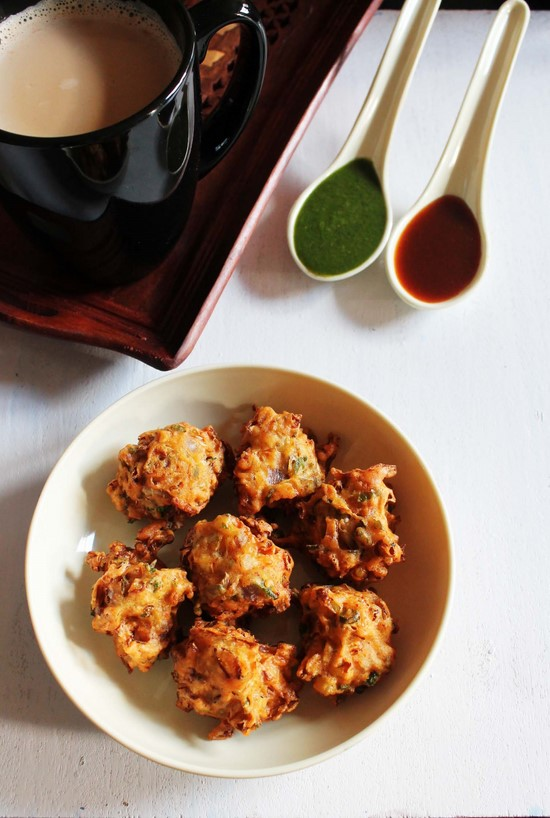
What makes this recipe even more special is that it requires no fancy ingredients—only kitchen staples like chickpea flour, onions, and basic Indian seasonings. It’s a budget-friendly and fuss-free snack that doesn’t compromise on taste. You can also customize it by adding ingredients like ginger, coriander leaves, or even grated carrots to boost the flavor and nutrition.
Whether served as an appetizer, evening snack, or side dish at get-togethers, cabbage pakoda always hits the spot. Serve it hot with green chutney or tangy tamarind sauce, and you’ve got a crispy, spicy, and comforting treat that disappears in minutes Cabbage Pakoda.
About This Cabbage Pakoda Recipe
- These cabbage pakodas offer an irresistibly super crispy and crunchy texture that makes them a crowd-pleaser every single time. Thanks to the combination of shredded cabbage and gram flour, each bite has the perfect balance of lightness and crunch.
- One of the best things about this recipe is how customizable the spice level is. If you enjoy a fiery kick, simply increase the number of chopped green chilies, or tone it down for a milder version that suits all palates—including kids and those who prefer gentler heat. You can even add a pinch of red chili flakes or crushed black pepper for added depth of flavor.
- These fritters come together in less than 30 minutes, making them an ideal option when you’re craving something savory but don’t have much time on hand. With minimal prep and common pantry ingredients, these pakoras can be whipped up at the last minute for unexpected guests or a spontaneous tea-time treat.
- They make an excellent evening snack, especially during the monsoon or winter months, when something hot and crunchy pairs perfectly with a steaming cup of masala chai. You can also serve them as an appetizer at small gatherings or parties—just add a side of mint-coriander chutney, tamarind sauce, or tomato ketchup, and watch them disappear in no time.
- Best of all, this recipe is naturally vegan and can be made gluten-free as well—just skip the asafoetida (hing) or use a gluten-free variety. It’s a wholesome option that caters to a variety of dietary needs without compromising on taste or texture.
- Whether you’re entertaining guests or simply treating yourself to something comforting and crunchy, these cabbage pakoras are guaranteed to hit the spot.
Ingredient Notes
Making the perfect cabbage pakoda starts with the right ingredients, each contributing to its taste, texture, and crunch. Here’s a detailed look at what goes into making this popular Indian fritter:
- Besan (Gram Flour): The backbone of the batter, besan binds all the ingredients together and lends that signature nutty flavor associated with pakodas. It gives the fritters their soft interior while providing structure.
- Rice Flour: A small amount of rice flour is mixed in with the gram flour to increase the crispiness. It helps create a light, crunchy coating that stays crisp longer, even after the pakodas cool down slightly.
- Red Chili Powder: This spice brings heat and color to the batter. It gives a pleasant kick without overpowering the other flavors. Feel free to adjust the amount depending on your spice tolerance.
- Kasoori Methi (Dried Fenugreek Leaves): These aromatic, crushed leaves infuse dishes with a gentle earthy bitterness and a rich, slightly nutty flavor that adds depth and complexity to every bite. They elevate the humble pakoda with an aromatic, earthy note that makes it extra special.
- Green Chilies: Finely chopped green chilies add bursts of heat in every bite. You can control the spice level by removing the seeds or using fewer chilies.
- Fresh Cilantro and Mint Leaves: Cilantro (coriander leaves) brings freshness and a bright herbal note to the mix, while mint offers a cooling contrast. The mint is optional, but it adds a refreshing twist that balances the spices beautifully.
- Red Onion: Thinly sliced or finely chopped red onions add natural sweetness, mild pungency, and a slight crunch. They also caramelize slightly during frying, enhancing the overall flavor.
- Cabbage: The star ingredient, finely shredded cabbage adds bulk and a satisfying bite to the pakodas. When chopped thin, it fries evenly and melds perfectly with the spiced batter. Its natural moisture also helps soften the interior.
- Water: Used sparingly, just enough water is added to bind all the dry ingredients together into a thick batter. The consistency should be such that the mixture clings to the cabbage without being runny.
- Salt: A crucial seasoning, salt enhances all the other flavors in the mix. Be sure to mix well and taste the batter before frying to ensure it’s well-balanced.
- Oil: For deep frying. Use any neutral oil with a high smoke point, such as sunflower or vegetable oil. The oil should be hot enough to sizzle immediately when the batter is dropped in, ensuring a crisp and golden finish.
How To Make Cabbage Pakoda? (Pics)
1. Combine the dry ingredients: In a big bowl, combine gram flour (besan) and rice flour. These two flours form the base of your pakoda batter—besan lends that classic nutty flavor, while rice flour ensures crispiness. Now, add salt to taste, a generous pinch of red chili powder for heat, and a tablespoon of crushed kasoori methi (dried fenugreek leaves). Kasoori methi gives a beautiful earthy and slightly bitter note that makes the pakodas taste unique.
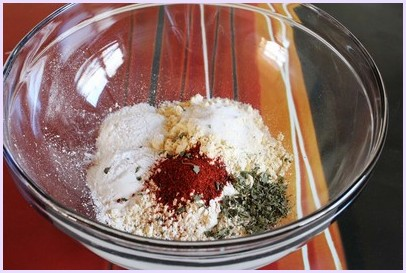
2. Mix the dry ingredients thoroughly: Use a spoon or your hands to mix all the dry ingredients together. This step is crucial so that the spices are evenly distributed throughout the flours before adding any moisture.
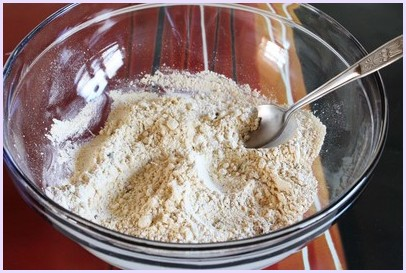
3. Add the chopped vegetables and herbs: Now toss in the finely chopped green chilies (adjust as per your spice preference), freshly chopped cilantro (coriander leaves), and a handful of mint leaves if you’re using them (they add a fresh, cooling note). Add thinly sliced red onion and shredded cabbage. For best results, use tightly packed cabbage and slice it as thin as possible. This ensures even frying and crisp texture.
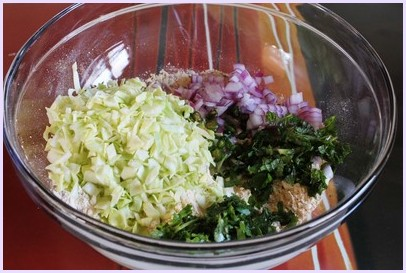
4. Mix well to draw out moisture: Now, use your hands to massage the mixture. As you mix and press, the cabbage and onion will start releasing moisture. This natural moisture is essential—it helps bind the mixture and reduces the need for added water. If time allows, let the mixture rest for 5–10 minutes—this short pause allows the flavors to infuse deeply and makes the batter smoother and easier to work with.
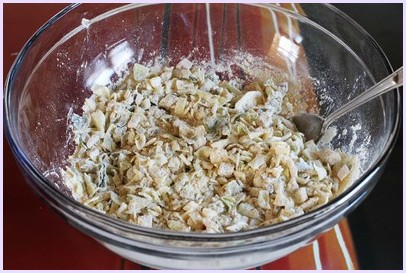
5. Begin heating the oil: Before adding any water, start heating oil in a deep frying pan or kadai over medium heat. It’s important the oil reaches the right temperature so the pakodas become crispy, not greasy.
6. Adjust the batter consistency: Gradually drizzle in water, about a tablespoon at a time, stirring thoroughly after each addition. You’re aiming for a mixture that’s damp enough to bind without becoming soggy or runny. You want a medium-thick batter that lightly coats the cabbage and onions—if it’s too runny, the pakodas will soak oil and turn soggy
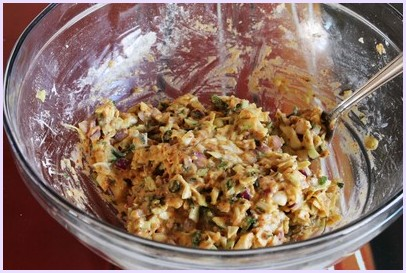
7. Check the oil temperature: Do a quick temperature check by dropping a tiny piece of batter into the oil. Maintaining the right oil temperature is key to perfect golden pakoras.
8. Shape and drop the pakodas: Using your fingertips or a small spoon, gently pinch and drop small portions of the batter into the hot oil, making sure not to overcrowd the pan. Let them naturally form irregular shapes for extra crispiness. Don’t overcrowd the pan—give them space to expand and crisp up properly. Uneven, rustic shapes are totally fine—they actually make the pakoras crunchier!

9. Fry to perfection: Let the pakodas fry over medium heat, flipping occasionally using a slotted spatula. Fry until they turn deep golden brown and crisp on all sides. Avoid frying on high flame as it can brown the outside quickly but leave the insides undercooked.
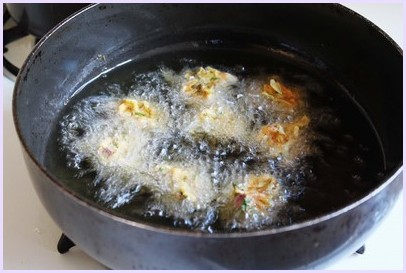
10. Drain excess oil and repeat: Once the pakodas are perfectly crispy, remove them using a slotted spatula and place them in a steel strainer or colander set over a plate to allow excess oil to drip. You can also place them on kitchen paper towels. Continue frying the remaining batter in batches until all done.
👉 Tip: Once your crispy potato pakoras are fried to golden perfection, transfer them to a wire rack or a strainer instead of placing them on paper towels. This allows air to circulate all around, keeping the pakoras crunchy for longer by preventing steam buildup underneath.

Expert Tips
- To achieve perfectly crispy pakodas, it all starts with the batter. A thick batter is the secret to that irresistible crunch. When preparing the batter, add water gradually—just a little at a time—until you reach the right consistency. The mixture should be thick enough to coat the cabbage and other ingredients without becoming runny. A watery batter not only fails to hold the shape but also results in soggy and oily pakodas.
- If by mistake the batter becomes too thin, don’t worry. You can easily fix it by adding a spoonful of besan (gram flour) or rice flour. Rice flour, in particular, helps enhance the crispiness of the pakodas, so it’s a handy ingredient to keep on standby.
- Maintaining the right oil temperature is crucial for frying crispy pakoras. 1 .If the oil is too cool, the pakoras will absorb excess oil and turn greasy and limp. On the other hand, if the oil is excessively hot, the outer layer will brown too quickly, while the inside stays undercooked and doughy. Achieving the perfect temperature ensures even cooking and a crunchy texture. A simple way to check if the oil is ready: drop a small portion of batter into the hot oil—if it floats up slowly and sizzles gently, the oil is at the ideal temperature.
- Always avoid overcrowding the frying pan. Dropping too many pakodas into the hot oil at once can cause a sudden drop in oil temperature, which leads to uneven frying. This not only makes the pakodas soggy but also prevents them from getting that perfect crisp texture. To ensure optimal crispiness, fry a few pakodas at a time—this helps retain steady oil temperature and promotes even cooking. For the best texture and color, fry them in small batches, giving each one enough space to cook evenly and crisp up beautifully.
- And one important tip—never add baking soda to the batter. While baking soda may give volume in some fritters, it is not suitable for cabbage pakodas. It tends to make them overly soft and spongy, and worse, it can increase oil absorption, leaving you with limp and oily fritters instead of the light, crunchy snack you’re aiming for.
- By following these essential tips, you can enjoy golden, crispy, and delicious cabbage pakodas every time—perfect as an evening snack or a party appetizer!
Storage & Reheat
- Absolutely! Cabbage pakora is at its best when served piping hot and freshly fried—golden brown, crunchy on the outside, and tender on the inside. The flavors and texture shine brightest when enjoyed straight from the pan. However, if you happen to have leftovers (though that’s rare with such a delicious snack!), don’t worry—there’s a great way to revive them.
- Instead of tossing them out or eating them cold, you can easily bring back their crispy goodness using an air fryer. To reheat, arrange the leftover pakoras in a single layer in the air fryer basket—make sure they’re not stacked or overcrowded, as this allows hot air to circulate evenly around each piece. Set the temperature to 370°F (190°C) and heat them for about 2 to 3 minutes. Keep a close eye on them so they don’t overcook or burn. Once done, they’ll be almost as crisp and flavorful as they were when first fried.
- Avoid reheating cabbage pakoras in the microwave, though—it tends to make them limp and soggy due to the trapped steam. Microwaves heat food by creating moisture, which completely ruins the pakora’s crispy outer layer. For best results, always go with the air fryer or even a quick flash in a hot oven or on a tawa (griddle) if you don’t have an air fryer. This way, you get to enjoy the crunch and taste all over again, even from leftovers!
